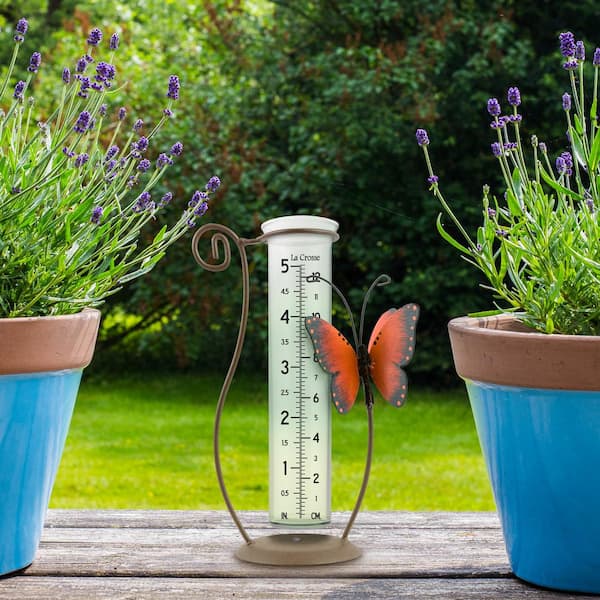The Rain Gauge: Figuring Out Rainfall Patterns and Enhancing Weather Understanding
The Rain Gauge: Figuring Out Rainfall Patterns and Enhancing Weather Understanding
Blog Article
Do It Yourself Rainfall Gauge: Basic Steps to Make Your Own
Producing your own DIY rainfall scale is a reliable and straightforward way to determine and videotape precipitation. With just a few typical products and some standard actions, you can conveniently construct your own rain scale at home. Let's obtain begun on making your Do it yourself rain gauge today!
Gather Products
To begin constructing your Do it yourself rain gauge, gather all the needed materials using a comprehensive listing of items. Having the best materials on hand will ensure the successful creation of your rain scale and allow for exact measurements of rains. Collecting these materials in advance will certainly streamline the construction procedure and make certain that you have whatever you require to produce your very own DIY rain gauge.
Prepare the Container

Mark the Measurement Increments
To accurately measure the quantity of rainfall, properly noting the dimension increments on your DIY rain gauge is crucial. Without accurate and clear markings, it would certainly be difficult to identify the specific amount of rainfall collected in your rain scale. Right here are the steps to mark the measurement increments on your rainfall gauge.
The most typical devices for gauging rains are inches and millimeters. Once you have actually selected the unit, utilize a long-term pen or water-proof paint to note the increments on the side of your rainfall scale.
When marking the increments, it is important to make certain that they are evenly spaced and plainly visible. Utilize a leader or determining tape to ensure accuracy and consistency. Additionally, make certain that the markings are immune to fading or abrading, as direct exposure to the components might trigger them to weaken with time.
Place the Rainfall Scale Outdoors
The rain gauge ought to be put outdoors to accurately collect rainfall information. The area selected for the rain gauge should be open and free from any kind of blockages that might possibly influence the dimension of rains. It is vital to locate an area that is not blocked by trees, buildings, or other structures that could block the rain from getting to the gauge. This will ensure that the gathered information is representative of the actual rains in the area.
Additionally, it is important to position the rainfall gauge on a stable surface area, such as a level ground or a strong blog post. This will stop any activity or tilting of the scale, which might cause unreliable measurements. It is also recommended to avoid putting the gauge near any sources of man-made water, such as sprinklers or water drainage systems, as this can disrupt the accuracy of the measurements.
Monitor and Record Rain Data
Normal surveillance and recording of rains data is important for exact information analysis and analysis. By tracking rains measurements, you can gain useful insights right into weather condition patterns, climate trends, and water source administration. To effectively keep an eye on and tape-record rains data, it is vital to establish a regular and maintain regular practices.
First of all, ensure that your rain scale is positioned in an open location away from challenges such as trees or structures that may block rains. Furthermore, ensure the rain scale is level and safely secured to avoid any kind of movement that can impact the accuracy of try this website the dimensions.

When taping the rains information, it is very important to note the date and time of each measurement. Utilize a leader or a determining adhere to establish the rainfall depth in the rain gauge, and record this info precisely.
To guarantee the accuracy of the measurements, it is recommended to clear the rainfall scale after each recording. This will certainly protect against any kind of overflow or dissipation from impacting succeeding measurements.
Verdict
Finally, developing a DIY rain gauge is a practical and easy method to monitor and tape-record rains information (The Rain Gauge). By adhering to the actions outlined in this article, you can easily gather products, prepare the container, mark the measurement increments, and place the rainfall gauge outdoors. Regularly checking and recording rains reference data can supply important details for different purposes
Having the ideal products on hand will certainly make certain the effective creation of your rain scale and allow for accurate measurements of rainfall.To accurately gauge the quantity of rains, Visit Website precisely noting the measurement increments on your DIY rain gauge is necessary.The rainfall scale need to be placed outdoors to properly collect rains information. The location selected for the rainfall scale must be complimentary and open from any kind of obstructions that might possibly influence the measurement of rainfall.In verdict, developing a DIY rain gauge is a useful and basic way to keep track of and tape rains information.
Report this page